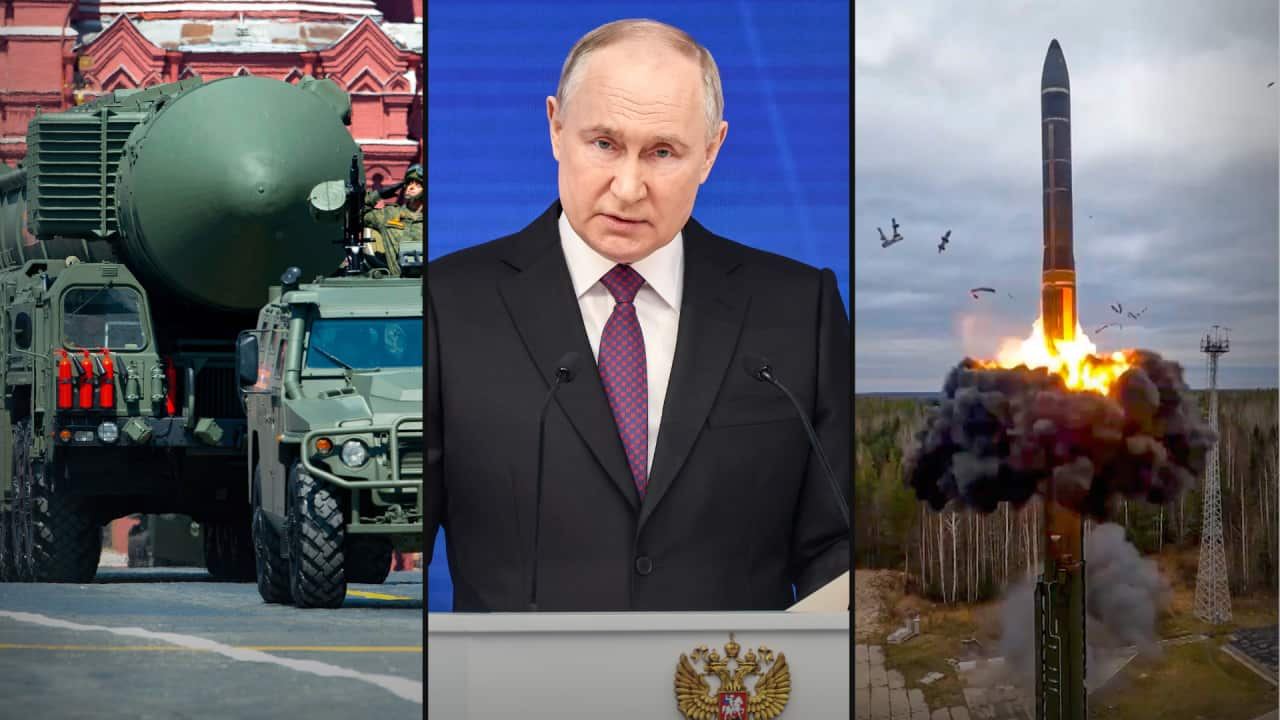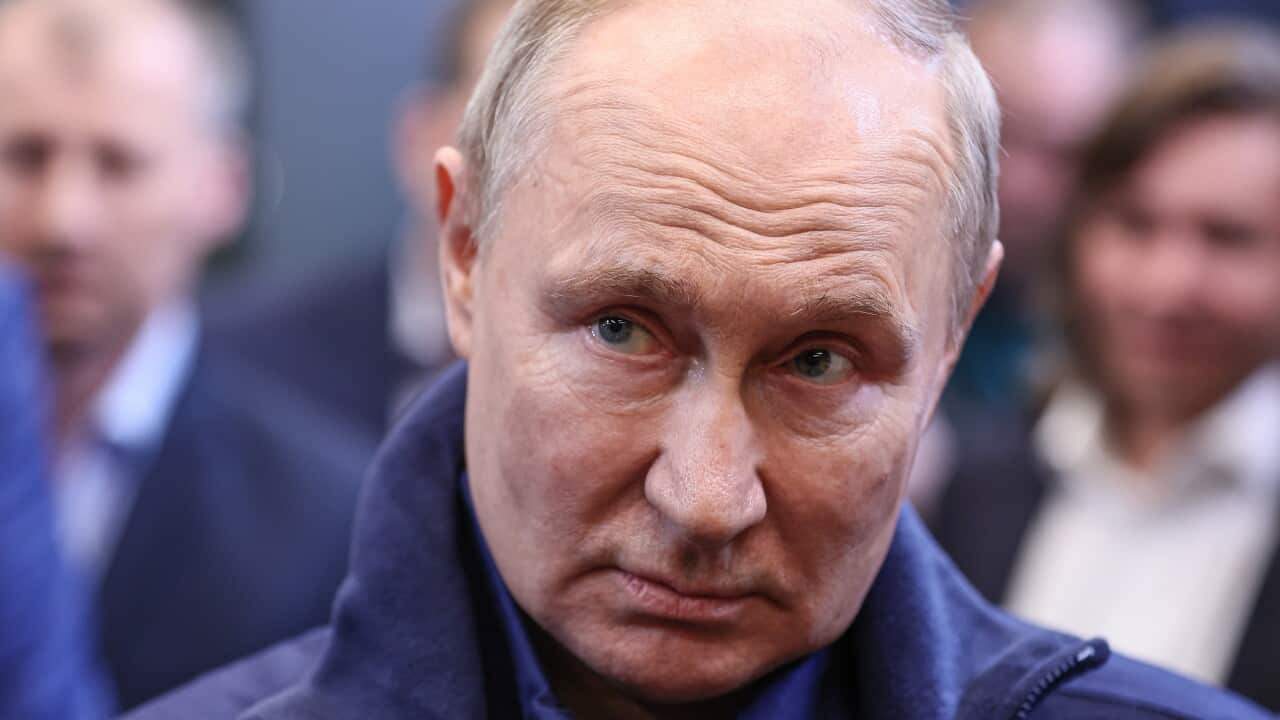It's the world's largest nuclear warhead stockpile — and Russian President Vladimir Putin is again threatening to use it.
Putin on Thursday warned Western countries t — a move that he said could cause the "destruction of civilisation".
It's not the first time he's made such a threat, and it almost certainly won't be the last.
Vladimir Putin's nuclear threats: A recent history
When launching Russia's full-scale invasion of Ukraine in 2022, Putin warned nations who intervened they would face "consequences that you have never experienced in your history". It was widely considered a veiled nuclear threat.
In April that year, he said a new nuclear-capable intercontinental ballistic missile (ICBM) would "force all who are trying to threaten our country in the heat of frenzied, aggressive rhetoric to think twice".
Early last year Putin said weapons in Belarus, an ally, adding that 10 of its aircraft capable of carrying such weapons were there. In June, he said the move was on track for completion.

Russian President Vladimir Putin (right) and Belarusian President Alexander Lukashenko. Source: AAP / Gavriil Grigorov/SPUTNIK/KREMLIN POOL/EPA
Putin's nuclear warning on Thursday during his annual state of the nation address was prefaced with a specific reference to an idea, floated by French President Emmanuel Macron on Monday, of European NATO members sending ground troops to Ukraine — a suggestion that was quickly rejected by the United States, Germany, Britain and others.
"(Western nations) must realise that we also have weapons that can hit targets on their territory," Putin said. "All this really threatens a conflict with the use of nuclear weapons and the destruction of civilisation. Don't they get that?!"
Inside Russia's nuclear arsenal
It's made up of tactical nuclear weapons, those used for specific gains on the battlefield, and strategic nuclear weapons, which have long-range capabilities.
Russia has an estimated 5,977 warheads, according to a 2022 Bulletin of the Atomic Scientists report. Researchers believed that 1,588 were deployed strategic warheads, while 977 strategic and 1,912 tactical warheads were in storage. They estimated 1,500 were retired but still largely intact.
The key, though, is how to deliver the weapon — the missiles, submarines, and bombers that carry the warhead.
Russia appears to have about 400 nuclear-armed intercontinental ballistic missiles, which the Bulletin of the Atomic Scientists estimate can carry up to 1,185 warheads.
It operates 10 nuclear-armed nuclear submarines which could carry a maximum of 800 warheads. It has around 60 to 70 nuclear bombers.

A Russian nuclear missile rolls along Red Square during a military parade in 2020. Source: Getty / Mikhail Svetlov
In September last year, Russia announced its Sarmat missile system () had "assumed combat duty". It is said to have a range of 18,000km (meaning it could easily reach the US or Australia) and can carry up to 15 nuclear warheads, though the US believes its capacity is more likely to be 10 warheads.
Russia and the US are signatories to the bilateral New START (Strategic Arms Reduction Treaty). It caps the number of strategic nuclear warheads that both sides can deploy, and the deployment of land and submarine-based missiles and bombers to deliver them. It also allows each side to inspect each other's nuclear arsenal to ensure the pact is being followed.
But Putin said in February last year Russia would suspend its participation, although his country would continue to "strictly comply" with the treaty's limits.

The Russian intercontinental ballistic missile Sarmat during a test launch in 2022. Source: AAP / RUSSIAN DEFENCE MINISTRY PRESS SERVICE / HANDOUT/EPA
It says the smallest weapon in Russia's arsenal is the size of towards the end of World War Two.
Russia's nuclear trigger
Russia's nuclear doctrine sets out four circumstances for nuclear weapons use: imminent or actual attacks on Russia, threats to its control over its nuclear weapons, and threats to its existence.
However, classified Russian military files leaked to British newspaper the Financial Times suggested its threshold for using tactical nuclear weapons was lower than this.
There were broad triggers, like an enemy incursion onto Russian territory, to specific triggers such as if a certain number of its ballistic missile submarines were to be destroyed, the Financial Times reported.

Russian nuclear-powered submarine Yuri Dolgorukiy pictured in 2014. It can carry nuclear missiles. Source: Getty / Sasha Mordovets
But there are no signs that Russia is preparing to use a nuclear weapon, US State Department spokesman Matthew Miller said on Thursday, as he criticised Putin's latest comments.
"It is not the first time we have seen irresponsible rhetoric from Vladimir Putin. It is no way for the leader of a nuclear-armed state to speak."
- With additional reporting by Reuters.










